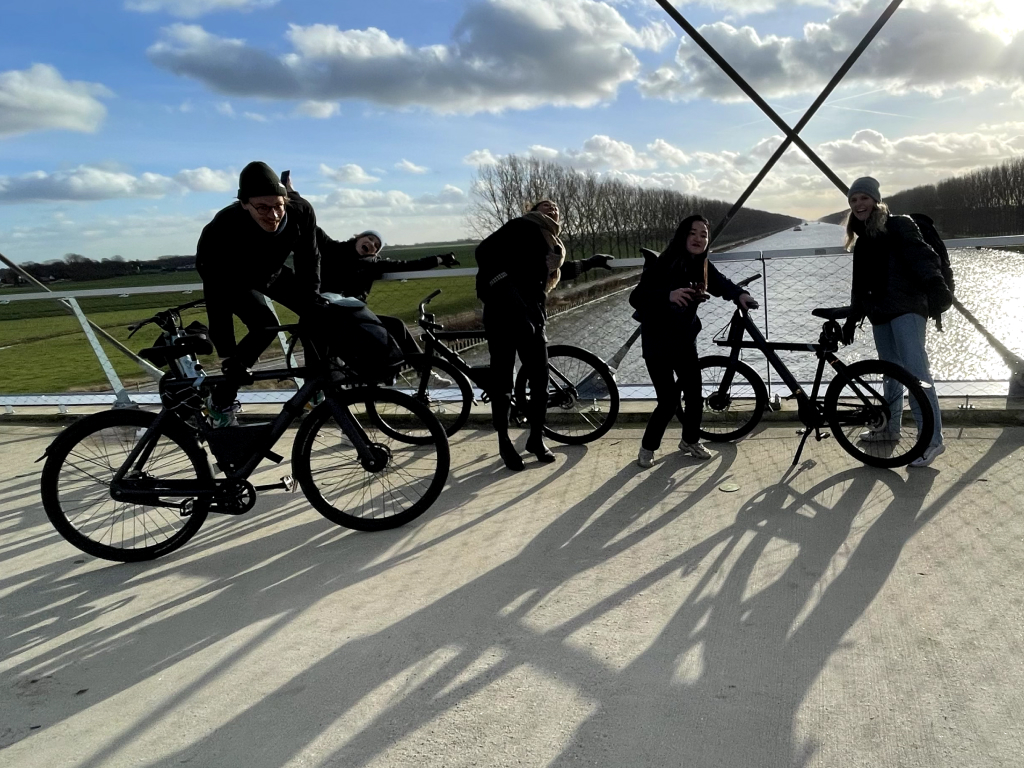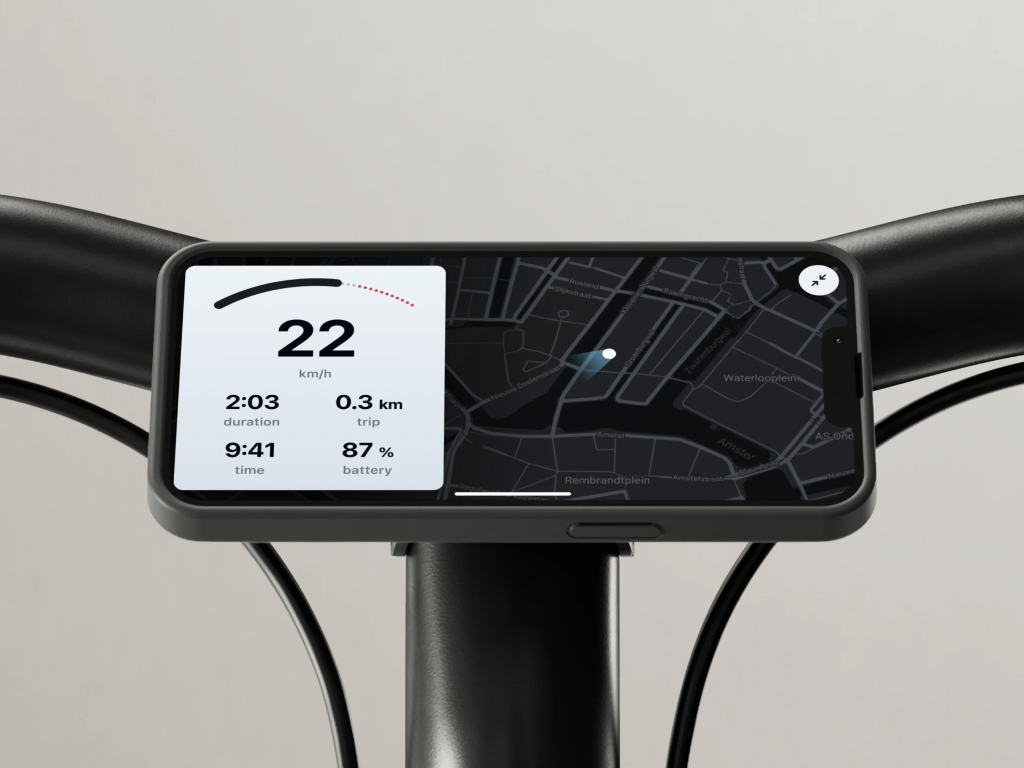Experience Design is often horizontal function within a sea of verticals. The same was true for VanMoof. We used this unique position and mandate to create a shared five-year vision and strategy to inspire the company and guide software development priorities in both the near- and far-terms.
The Situation
VanMoof had quickly scaled beyond a single room, a single floor, and a single location. Aligning on decisions was more challenging, and everyone was competing for software development resources. Our digital teams had become increasingly reactive and frustrated as business needs inevitably competed for their attention. We needed new processes to support our growth and our ambition.
The Challenge
Since scaling beyond a single table, room, and building, the experience strategy sessions were the first time that a broad multi-disciplinary approach had been taken to establish a strategy. Following an approach I’d developed with several other companies in the past, the Experience Design team organized and facilitated a series of eight workshops, each focused on a different part of the rider journey – five from the rider experience and three supporting the rider experience from an internal service perspective.
The Process
Ideation
Hosting cross-functional sessions to collect and brainstorm ideas and to turn those ideas into stories
Synthesis
Making sense of the more than four-hundred ideas generated through our workshops
Storytelling
Creating a sharable strategy to inspire the company and guide the software team’s priorities
Application
Making use of the experience strategy to inform our per-sprint, quarterly, and yearly planning
Ideation
Over the course of four weeks, we held eight workshops. Each workshop lasted an afternoon and pulled in business stakeholders, product owners, developers, and designers. The goal was twofold: we hoped to better understand what initiatives the businesses were already working toward so that we could combine our efforts while also creating momentum around more cross-functional project groups.
Because we were bringing together folks from different teams, our workshops began with introductions so that everyone could get to know who they’d be spending the afternoon collaborating with. We quickly moved into an ideation session where we used the rider journey as a structure to brainstorm ideas. We then broke the room into smaller groups. Each group was provided with a persona and asked to write a believable scenario based on the ideas we’d generated earlier. We ended each session by sharing out the scenarios with eachother.
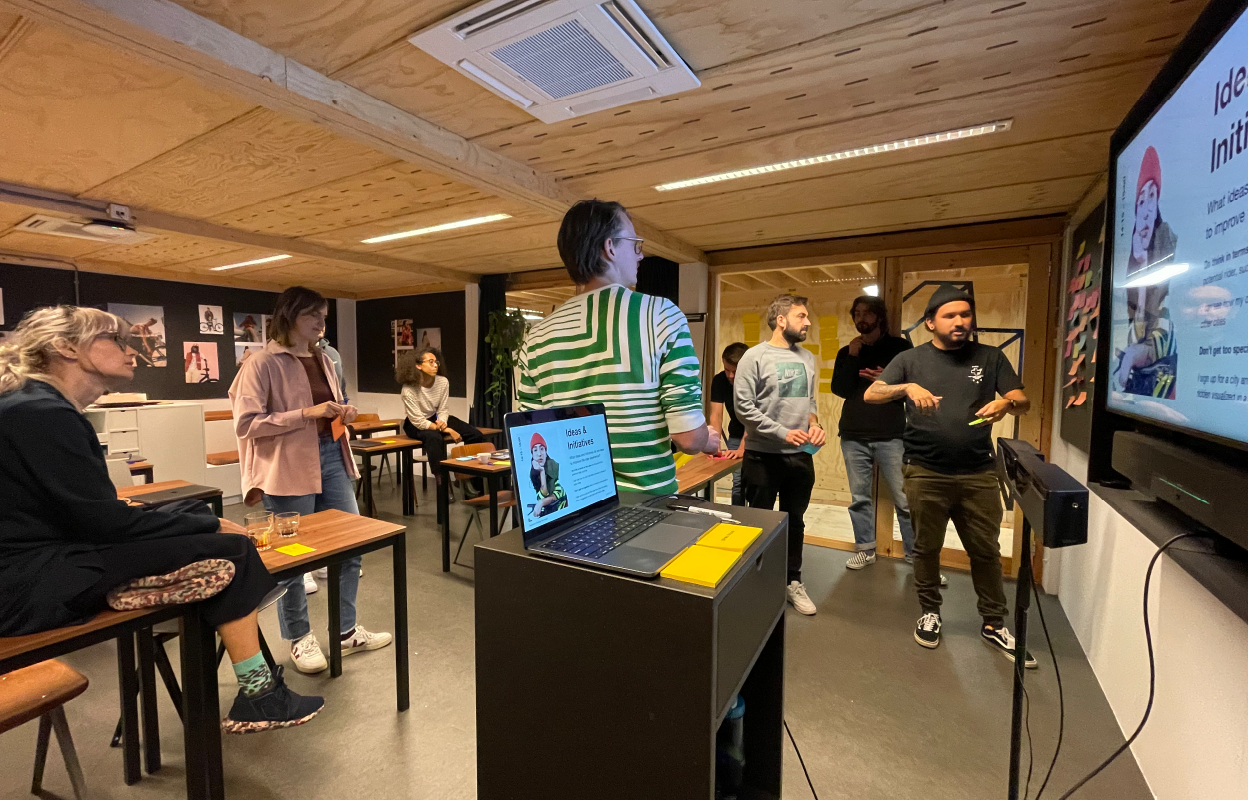
Synthesis
Through these sessions, we generated over four-hundred ideas. To make this more manageable, we started by pulling the ideas from all workshops into a single place. We removed duplicates and grouped similar ideas into less specific concepts. We then categorized these, removing ideas that wouldn’t provide obvious value to our riders and highlighting those that would help our business be more sustainable as well as those we could monetize.
With the reduced idea set, we began to cluster concepts into opportunity-based clusters. Along with the list of related ideas, each cluster had a description that outlined clearly the value it would bring to the rider and/or the business. These opportunity clusters became the backbone of our experience strategy.
Along with our opportunity clusters, which represented what we wanted to do, we also created principles to describe how the experience would feel. Principles ranged from the basics like “safe” and “reliable” to the more aspirational like “fun” and “supportive”. For each, we created clear examples of would and would not be inline with the principle. We then looked across our opportunity clusters to highlight which principles were most relevant to bringing meaningful experiences to life.
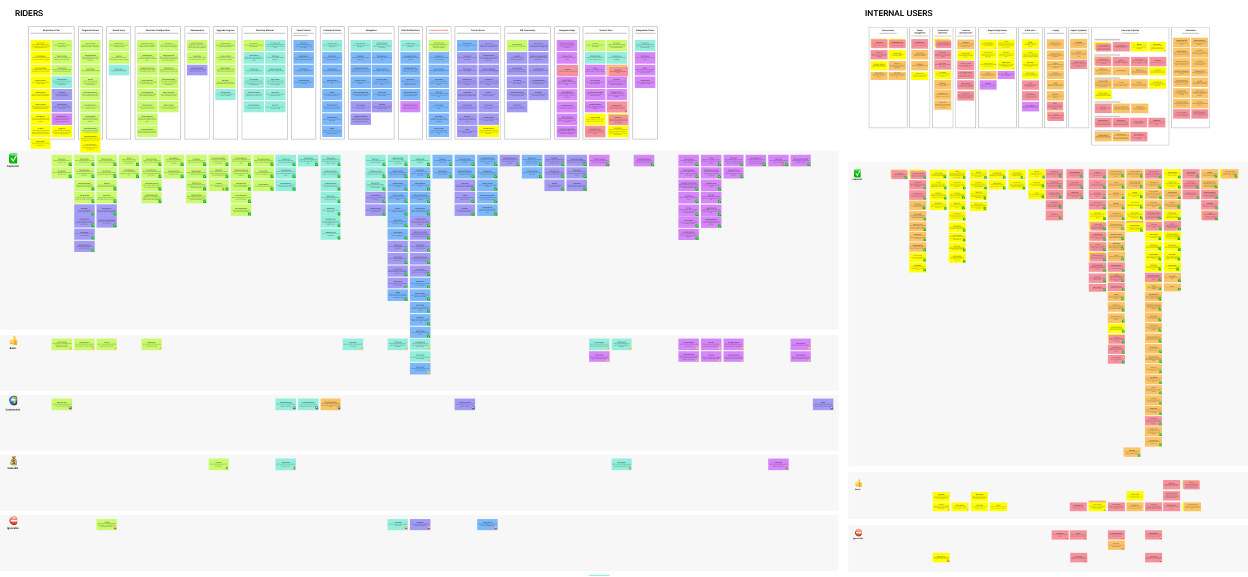
Storytelling
In order to influence the organization, we needed to get all of our thinking out of our giant, messy Miro board and into something that could be shared and used outside of design. This meant finding a format that would inspire everyone from business leads to data analysts while keeping things straightforward and to the point.
What we created was a presentation that could be consumed in 1-minute, 1-hour, or 1-sprint. We started with the 1-hour view, which would serve as an introduction to the overarching strategy. In this amount of time, we could introduce a colleague to the journey and the different opportunity clusters living along it. Each opportunity cluster would have a deep dive highlighting the “why” and the “what” along with how we would measure success. We captured the concepts grouped into the opportunity and the most relevant experience principles.
For a 1-minute executive summary, we presented only the opportunity clusters mapped to the high-level journey. For most cases, however, our stakeholders already had a goal and context, so we could simply dive into the single opportunity cluster that was most relevant to the conversation.
For the 1-sprint views, our readers were primarily developers, product owners, or project managers. Here we could provide the overview, the deep dive, and refined scenarios highlighting how a feature would live within the broader context of the rider’s or internal user’s experience.
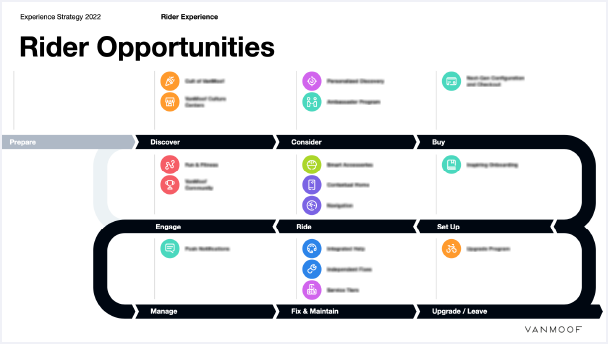
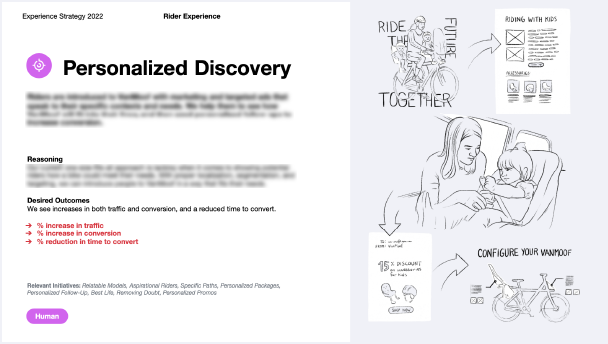
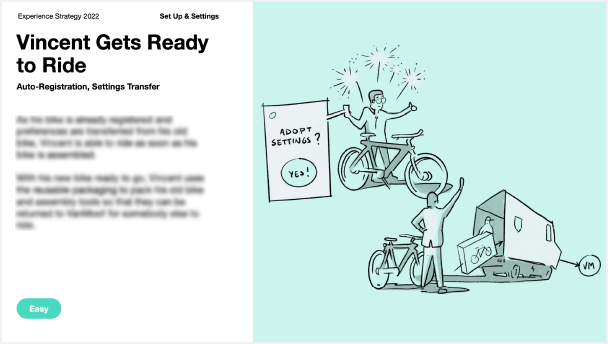
Application
It would be setting ourselves up for failure to take on all of these opportunities at once, so prioritization was essential. With the impending bike launch, anything related directly to the bikes or the launch event itself became our top priority, and this is where I focused the team’s energy. Of course we still needed to support the occasional request falling outside of this primary focus, and here we continued to use the experience strategy to ensure future-proof decision making through MVP execution.
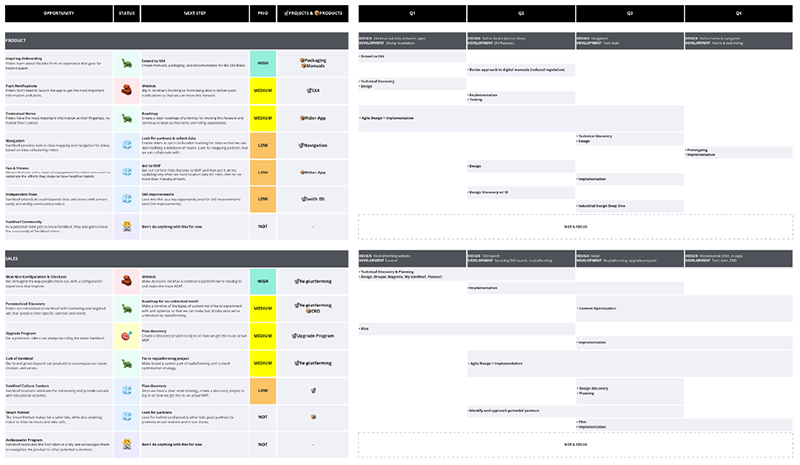
A year after our initial experience strategy, we continue to use both the opportunity clusters to guide our work. On both a yearly and quarterly basis we assess where we should focus how much energy we should put into various initiatives. We use the strategy to outline our priorities and create transparency outward to the rest of the organization.
Outcomes
While the experience strategy didn’t protect us from reactive initiatives, it did provide a bigger picture to place them into. We’ve been able to tie short-term projects to long-term goals while carving out room to tackle specific initiatives from the strategy. Overall, our work has become more purposeful and our direction more clear.
Takeaways
Collaboration is Key
As we scaled, different teams and departments developed their own strategies. Acknowleding these took more time and effort, but ultimately helped to create buy-in for an overarching strategy. By working together, we also created momentum toward our shared future.
Made to Be Used
We knew that we needed to format the strategy in a way that would be easy to understand and consume. By simplifying and tying success to measurements that other teams were already using, we were able to create something that colleagues outside of design would use to inform their decisions and strategies.
Revisit, Revisit, Revisit
It’s easy to do something once and then forget about it when new ideas pop up. I made sure that our team continued to revisit the strategy, pulling it into quarterly goals and yearly planning so it was always present in our minds and decisions.
